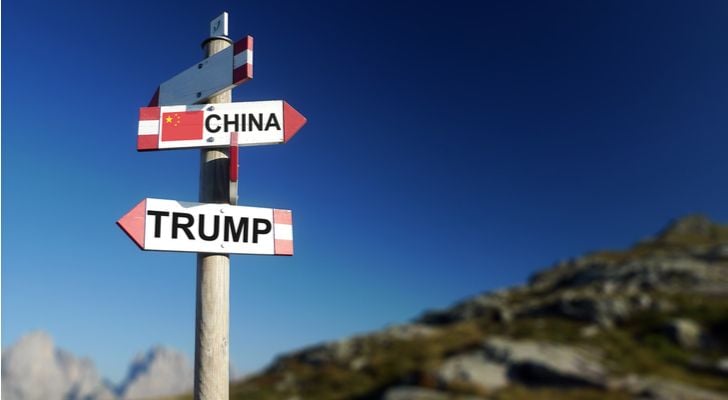In July 1914 a lot of armchair generals were busy war-gaming the coming conflict, predicting quick victory to their side in what would become World War I.
In July 2018 a lot of armchair economists are doing the same thing with the Trump trade war.
We’re going to lose, says Yale’s Stephen Roach. No, we’re going to win, says Allianz’s Mohamed El-Erian.
They’re both wrong. As in World War I, we’re all going to lose. The chief casualty will be the economic order that has held since World War II, which will have to be rebuilt — and will be rebuilt in unpredictable ways.
Trouble Ahead
The first thing that happens in a trade war is inflation. The war consists of countries imposing taxes on other countries. This raises the prices of imports, but it also raises the prices of substitutes for those imports.
So, inflation ahead.
This is followed by unemployment. Trade goes down, goods pile up in warehouses and on wharves, so the people making those goods get unpaid vacation. We haven’t experienced an “inventory recession” in decades, thanks to technology, but that’s what they used to look like.
So, unemployment ahead.
Trade wars often impact third parties who are trying to avoid them. Take India, for instance. The U.S. is trying to cut off Iranian oil from India, and this is claimed as a win. But oil isn’t as fungible as it sounds. Iranian and American oil are different. India is stockpiling Iranian oil because its refineries can’t easily switch from that to the American stuff.
If India’s economy falls in the fight over the oil trade, it has knock-on effects for prices and growth worldwide, as India has become one of the world’s biggest growth engines.
Expect The Unexpected
As with World War I no one, not even me, really knows what will happen when the trade war shooting starts. That’s why smart people try to avoid them.
Right now trade war reporters are busy searching for vulnerabilities on both sides of the conflict.
The last trade war, in the early 1930s, came against the backdrop of the Great Depression, which eventually led to the assumption that only direct, imperial rule could guarantee a great power its markets. This one is happening against a backdrop of general prosperity, but there’s no reason to believe the result will be any different.
Trade has made every economy dependent on others for inputs and for markets. As with real wars,
it’s little countries that get burned first. As the damage piles up, leaders in these countries are going to blame those who got them into this mess. The possibility that the trade war turns into a shooting war is very real.
A lot of the blame over the trade war will fall on the U.S., and countries are most likely to look inward as a result. How that helps anyone — except Russia — is beyond me.
The Bottom Line for the Trade War
The trade war has yet to impact markets only because there is a delayed impact. The first instinct of neutrals, as in the India case, is to stockpile more from both sides. Higher prices from import duties and the need for substitutions don’t become apparent for some time.
But these impacts can’t be delayed forever. If the duties remain, if peace doesn’t return, you should start seeing the impact of constricted trade as early as next month.
Trade wars are unhealthy for economies and other living things. Don’t let some armchair general tell you any different. His company has never been in this kind of battle.
None of us has. Better jaw-jaw than war-war.
Dana Blankenhorn is a financial and technology journalist. He is the author of the historical mystery romance The Reluctant Detective Travels in Time, available now at the Amazon Kindle store. Write him at danablankenhorn@gmail.com or follow him on Twitter at @danablankenhorn. As of this writing he owned no shares in companies mentioned in this article.
Legendary Investor Louis Navellier’s Trading Breakthrough
Discovered almost by accident, Louis Navellier’s incredible trading breakthrough has delivered 148 double- and triple-digit winners over the past 5 years — including a stunning 487% win in just 10 months.
Learn to use this formula and you can start turning every $10,000 invested into as much as $58,700.
Click here to review Louis’ urgent presentation.

